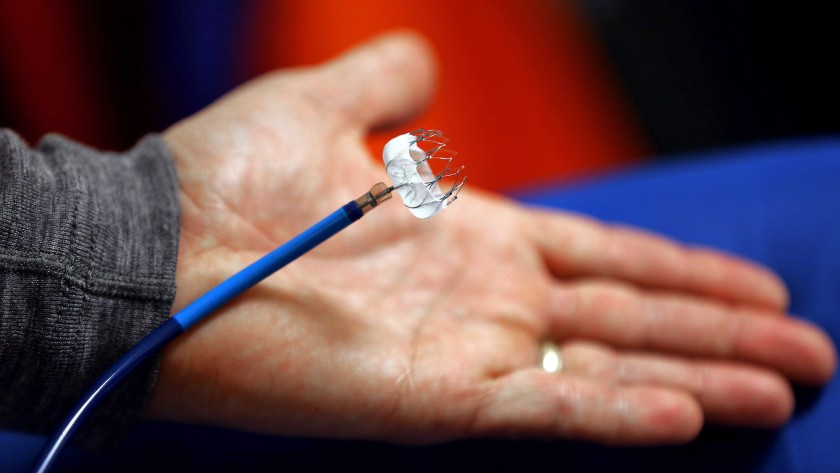Device Monitors Heart to Prevent Strokes
According to the CDC:
- Stroke kills about 140,000 Americans each year—that’s 1 out of every 20 deaths.
- Someone in the United States has a stroke every 40 seconds. Every 4 minutes, someone dies of stroke.
- Every year, more than 795,000 people in the United States have a stroke. About 610,000 of these are first or new strokes.
- About 185,000 strokes—nearly 1 of 4—are in people who have had a previous stroke.
- About 87% of all strokes are ischemic strokes, in which blood flow to the brain is blocked.
- Stroke costs the United States an estimated $34 billion each year.2 This total includes the cost of health care services, medicines to treat stroke, and missed days of work.
- Stroke is a leading cause of serious long-term disability. Stroke reduces mobility in more than half of stroke survivors age 65 and over.
- Stroke is the fifth leading cause of death for Americans, but the risk of having a stroke varies with race and ethnicity.
- Risk of having a first stroke is nearly twice as high for blacks as for whites2 and blacks have the highest rate of death due to stroke.
- Though stroke death rates have declined for decades among all race/ethnicities, Hispanics have seen an increase in death rates since 2013.
- Stroke risk increases with age, but strokes can—and do—occur at any age.
- In 2009, 34% of people hospitalized for stroke were less than 65 years old.
In 2015, the FDA gave its approval to a new device that is designed to help prevent strokes. The device is called the Watchman device. It is implanted into the left atrium of the heart to protect against atrial fibrillation, one of the leading causes of strokes.
Like most electronic devices, the Watchman has been improved and it now being used by more hospitals around the nation.
What’s so special about Watchman?
Many people who are deemed to have a greater chance of having a stroke are given blood thinner drugs, like Warfarin, to prevent blood clots from forming and traveling to the brain, lungs and returning to the heat. According to the Watchman website:
WATCHMAN offers an alternative to the lifelong use of warfarin for people with atrial fibrillation not caused by a heart valve problem (also known as non-valvular AFib).
This permanent heart implant effectively reduces the risk of stroke—without the risk of bleeding that can come with the long-term use of warfarin (the most common blood thinner). What’s more, WATCHMAN can eliminate the regular blood tests and food-and-drink restrictions that come with warfarin. (Warfarin is also known as Coumadin®.)
In a clinical trial, 9 out of 10 people were able to stop taking warfarin just 45 days after the WATCHMAN procedure…
So, how does this implant work to help prevent strokes?
To understand how WATCHMAN works, it helps to know more about the connection between atrial fibrillation and stroke.
Atrial fibrillation, or AFib, affects your heart’s ability to pump blood normally. This can cause blood to pool in an area of the heart called the left atrial appendage, or LAA. There, blood cells can stick together and form a clot. When a blood clot escapes from the LAA and travels to another part of the body, it can cut off the blood supply to the brain, causing a stroke.
In people with AFib not caused by a heart valve problem, more than 90% of stroke-causing clots that come from the heart are formed in the LAA. That’s why closing off this part of the heart is an effective way to reduce stroke risk.
The WATCHMAN Implant fits right into your LAA. It’s designed to permanently close it off and keep those blood clots from escaping. WATCHMAN is about the size of a quarter and made from very light and compact materials commonly used in many other medical implants.
Are you one of the many who take warfarin or other blood thinners to reduce the risk of stroke? Perhaps you may be a candidate for a Watchman implant. Wouldn’t it be great to stop taking blood thinners and living with the fear of uncontrolled bleeding? Ask your doctor. Taking an hour to have the device implanted into your heart may well be one of the most important hours you’ll ever spend.









Recent Comments